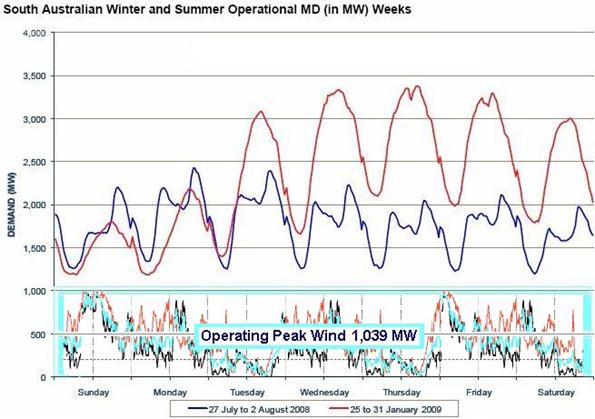Energy

- Details
- Written by: Richard_McKie
- Parent Category: Economy
- Category: Energy
- Hits: 7673
South Australia has run aground on the long foreseen wind energy reef - is this a lee shore?
Those of you who have followed my energy commentaries published here over the past six years will know that this situation was the entirely predictable outcome of South Australia pressing on with an unrealistic renewable energy target dependent on wind generated electricity, subsidised by market distorting Large-scale Generation Certificates (LGCs) (previously called RECs in some places on this website - the name was changed after their publication).

- Details
- Written by: Richard_McKie
- Parent Category: Economy
- Category: Energy
- Hits: 2447
Since I first published an article on this subject I've been taken to task by a young family member for being too negative about the prospects of a Hydrogen Economy, mainly because I failed to mention 'clean green hydrogen' generated from surplus electricity, employing electrolysis.
Back in 1874 Jules Verne had a similar vision but failed to identify the source of the energy, 'doubtless electricity', required to disassociate the hydrogen and oxygen.
Coal; oil and gas; peat; wood; bagasse; wind; waves; solar radiation; uranium; and so on; are sources of energy. But electricity is not.
Electricity (and hydrogen derived from it) is simply a means of transporting and utilising energy - see How does electricity work? on this website.
- Details
- Written by: Richard_McKie
- Parent Category: Economy
- Category: Energy
- Hits: 48196
August 2012 (chapters added since)
Introduction
The present government interventions in electricity markets, intended to move the industry from coal to renewable energy sources, are responsible for most of the rapidly rising cost of electricity in Australia. These interventions have introduced unanticipated distortions and inefficiencies in the way that electricity is delivered.
Industry experts point to looming problems in supply and even higher price increases.
A 'root and branch' review of these mechanisms is urgently required to prevent ever increasing prices and to prevent further potentially crippling distortions.

- Details
- Written by: Richard_McKie
- Parent Category: Economy
- Category: Energy
- Hits: 73394
The electrically literate may find this somewhat simplified article redundant; or possibly amusing. They should check out Wikipedia for any gaps in their knowledge.
But I hope this will help those for whom Wikipedia is a bit too complicated and/or detailed.

All cartoons from The New Yorker - 1925 to 2004
- Details
- Written by: Richard_McKie
- Parent Category: Economy
- Category: Energy
- Hits: 9146
The Chimera‡ - also known as carbon capture and storage (CCS) or Carbon Sequestration

Carbon Sequestration Source: Wikimedia Commons
Whenever the prospect of increased carbon consumption is debated someone is sure to hold out the imminent availability of Clean Coal Technology; always just a few years away.
I have discussed this at length in the article Carbon Sequestration (Carbon Capture and Storage) on this website.
In that detailed analysis I dismissed CCS as a realistic solution to reducing carbon dioxide emissions for the following reasons:
